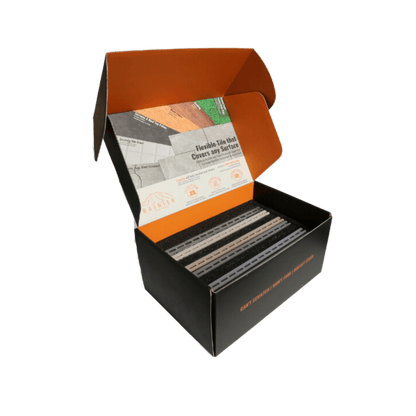Paver stones are a popular choice for landscaping, driveways, walkways, and patios due to their durability, aesthetic appeal, and ease of installation. However, over time, paver stones can shift, move, or even become uneven, compromising the stability and appearance of your outdoor surface. If you're looking for a solution to prevent this from happening, gluing the paver stones together can be a smart option.
In this guide, we will walk you through the steps on how to glue paver stones together, ensuring that your outdoor space remains sturdy and visually appealing for years to come. Whether you're installing a new patio or simply fixing a shifting driveway, this method can help you achieve a solid, long-lasting result.
Read more: how to install paving stones in grass
Why Glue Paver Stones?
Before diving into the process, it's important to understand why gluing paver stones is a good idea. Pavers are designed to be laid without mortar, relying on the weight of the stones and the gravel base beneath them to stay in place. However, factors like heavy traffic, seasonal shifts, and natural wear can cause the pavers to loosen over time.
By using adhesive specifically designed for pavers, you can prevent shifting and keep your stones securely in place. This is particularly useful in high-traffic areas or places where you want a more permanent solution without the need for constant upkeep.
Read more: how to paint paving stones
Materials You'll Need
To successfully glue paver stones together, you'll need a few essential materials. Most of these are readily available at home improvement stores or online:
-
Paver adhesive – Choose an adhesive formulated for outdoor use, such as a polymer-based glue or a construction adhesive. It’s crucial to select one that’s specifically designed for stone, concrete, or masonry to ensure strong bonding.
-
Cleaner – Depending on the condition of your pavers, you may need a cleaner to remove dirt, debris, or old mortar before applying the adhesive.
-
Gloves – Protect your hands from the adhesive, which can be difficult to remove once it sets.
-
Trowel or caulking gun – Use a trowel for spreading the adhesive or a caulking gun if you’re using adhesive in a tube.
-
Plastic sheeting or tarp – If you’re working in an area where you don’t want the adhesive to spread, this will help protect surfaces from excess glue.
-
Scraper – For cleaning up any excess adhesive that oozes out after placing the pavers.
Read more: How to lay paving stones
Step-by-Step Guide to Gluing Paver Stones
Now that you have all the materials ready, let's get into the step-by-step process of gluing paver stones together.
Step 1: Clean the Paver Stones
The first and most important step in gluing paver stones together is to clean them thoroughly. The adhesive works best when it bonds to clean, dry surfaces. Any dirt, dust, or debris on the stones or the surface they’re sitting on could interfere with the bonding process.
To clean the pavers:
-
Sweep off loose debris, dirt, and dust using a broom.
-
If the pavers are particularly dirty, scrub them with a stiff brush and some soapy water.
-
Allow the stones to dry completely before proceeding.
Read more: How to Remove Paint From Deck Without Chemicals
Step 2: Apply the Adhesive
Once your pavers are clean and dry, it’s time to apply the adhesive. Depending on the type of adhesive you are using, you can either spread it with a trowel or use a caulking gun.
-
For adhesive in a tube: Place the tube of adhesive into the caulking gun, cut the tip of the nozzle to the desired size, and apply a generous bead of glue along the edge of the paver. You don’t need to apply the glue to the entire stone – just the parts that will make contact with other pavers.
-
For spreadable adhesive: Use a trowel to apply a thin, even layer of adhesive to the surface of the paver stones that will be bonded. You only need to apply a small amount, as the adhesive will spread out when the pavers are pressed together.
Read more: How to Cut Paver Stones with a Circular Saw
Step 3: Position the Pavers
Once you’ve applied the adhesive, carefully place the paver stones into position. Take your time to make sure they are aligned properly, as the adhesive will begin to set relatively quickly. If you're working on a larger area, consider placing the pavers in sections so that you don’t run into any issues with the glue drying too fast.
Press each stone down firmly to ensure that the adhesive makes good contact with both the stone and the surface beneath. You can use a rubber mallet to gently tap the paver into place, which helps create a stronger bond. Be careful not to hit too hard and crack the stones.
Read more: how to build stairs with paver stones
Step 4: Wipe Off Excess Adhesive
Once the paver is in place, you may notice some adhesive squeezing out from between the stones. This is normal, but it’s important to clean up any excess before it dries.
Use a clean cloth or scraper to gently remove any excess adhesive. Be sure to do this quickly before the glue sets. If the adhesive has already started to dry, you can use a solvent recommended by the adhesive manufacturer to clean it off.
Read more: How to Fix Loose Paver Stones: A Step-by-Step Guide
Step 5: Allow the Adhesive to Dry
After you’ve positioned the paver stones and cleaned up the excess adhesive, it’s crucial to allow the adhesive to cure properly. Most paver adhesives take about 24 hours to fully set, though this can vary depending on the manufacturer’s instructions. Make sure to avoid walking or driving on the pavers during this curing time to ensure a strong bond.
Read more: how to get rid of moss on paver stones
Step 6: Seal the Joints (Optional)
For added protection and a cleaner finish, you may want to seal the joints between the paver stones after the adhesive has fully cured. A joint sealer will prevent weeds from growing between the stones, reduce the chances of dirt accumulation, and protect the adhesive from the elements.
You can apply joint sealer using a brush or sprayer. Once applied, make sure to let the sealer dry completely before using the surface.
Read more: how and when to coat paver stone
Tips for Best Results
To ensure that your paver stones remain securely in place and that your project goes smoothly, here are a few helpful tips:
-
Choose the right adhesive: Make sure that the adhesive you select is rated for outdoor use and is suitable for paver stones or masonry. Some adhesives are designed for temporary use, while others offer a more permanent bond.
-
Work in small sections: If you're working with a large area, break the project down into smaller sections. This helps ensure that the adhesive doesn’t dry before you can place the pavers.
-
Protect surrounding areas: Adhesive can be messy, so make sure to protect the surrounding surfaces with plastic sheeting or a tarp to avoid any accidental spills.
-
Keep the weather in mind: Avoid gluing paver stones together in extreme temperatures. Extremely hot or cold weather can interfere with the curing process. Ideal conditions are typically between 50°F and 85°F (10°C to 29°C).
-
Check the manufacturer's instructions: Always follow the specific instructions provided by the adhesive manufacturer for the best results.
Gluing paver stones together is an excellent way to ensure that your outdoor surfaces remain stable and visually appealing over time. With the right adhesive, proper cleaning, and a little patience, you can create a long-lasting, secure bond that prevents shifting or movement of the stones. Whether you're creating a new patio or fixing an existing walkway, this simple process will keep your paver stones firmly in place for years to come.
By following these steps and tips, you can enjoy a beautiful, durable outdoor space that will stand the test of time. Happy gluing!






